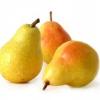The UVB radiation from Sun is important to our health due to the generation of hydrophilic D3. Unfortunately the FUD propagated by the Dermatological industry is depleting our bodies of this important pre-hormone by promoting use of sun blockers. An other important effect is exposing skin to sunlight may help to reduce blood pressure, cut the risk of heart attack and stroke due to the generation of nitric oxide.
Genetically I’m a light skinned, blue eyed nordic and living in the tropics at 1km high mountain area. I sun bathe every other day for 30 mins near the time of the local zenith. According to blood exams my D3 levels are upper high limits and my skin is not sun damaged. I wanted to share my “sun-protocol”
When to take sun: 1AM - 2PM (near local zenith) for 30 mins. This is important as the UVB, which triggers the D3 synthesis has the maximum. Avoid taking sun before or after this time window.
Before exposure
- In the morning: 500 mg Grape Seed Extract
- In the morning: Resveratrol 500 mg
- cup of strong green tea (brewed 4-7g) and infused for 20 mins before exposure.
After exposure:
Pure aloe ver gel externally. (not every time)
You shouldn't be afraid of naturally having the benefits of the Sun. From my opinion we need this exposure, after all, our evolution dictates so ![]()
Some interesting pointers (there are plenty):
J Cell Biochem. 2014 Dec 23. doi: 10.1002/jcb.25070. [Epub ahead of print]Resveratrol Potentiates Vitamin D and Nuclear Receptor Signaling.
Mol Vis. 2014 Feb 7;20:153-62. eCollection 2014.Epigallocatechin gallate eye drops protect against ultraviolet B-induced corneal oxidative damage in mice.
Oncol Rep. 2013 Jan;29(1):253-9. doi: 10.3892/or.2012.2083. Epub 2012 Oct 17.Involvement of microRNAs in epigallocatechin gallate-mediated UVB protection in human dermal fibroblasts.
Arch Biochem Biophys. 2011 Apr 15;508(2):152-8. doi: 10.1016/j.abb.2010.11.015. Epub 2010 Nov 19.Green tea prevents non-melanoma skin cancer by enhancing DNA repair.
J Invest Dermatol. 2009 May;129(5):1258-70. doi: 10.1038/jid.2008.354. Epub 2008 Nov 20.Inhibition of UVB-induced skin tumor development by drinking green tea polyphenols is mediated through DNA repair and subsequent inhibition of inflammation.
Photomed Laser Surg. 2012 Jan;30(1):20-5. doi: 10.1089/pho.2011.3043. Epub 2011 Nov 21.Topical grape seed proanthocyandin extract reduces sunburn cells and mutant p53 positive epidermal cell formation, and prevents depletion of Langerhans cells in an acute sunburn model.
J Photochem Photobiol B. 2013 Jan 5;118:16-21. doi: 10.1016/j.jphotobiol.2012.10.008. Epub 2012 Nov 3.Grape seed extract as photochemopreventive agent against UVB-induced skin cancer.
Exp Dermatol. 2009 Jan;18(1):69-77. doi: 10.1111/j.1600-0625.2008.00765.x. Epub 2008 Jul 9.Green tea extract reduces induction of p53 and apoptosis in UVB-irradiated human skin independent of transcriptional controls.
Edited by arska, 31 December 2014 - 07:28 PM.















































